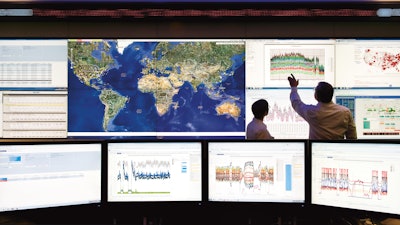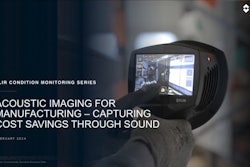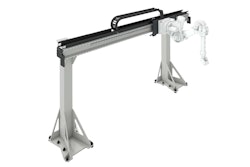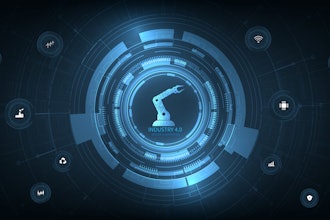
It’s been well documented that the exodus of experienced maintenance engineers will continue, removing decades of knowledge from manufacturing plants across the country. Remaining, however, will be the challenges they addressed.
Knowledge garnered from personal experience is obviously a valuable resource. For me, this lesson was first learned as a pre-16-year-old yearning for the independence only realized via a driver’s license and vehicle. This lead to summers filled with mowing several lawns using a unique variety of push movers. Each of which held a list of diva-like demands that needed to be met before a single blade of grass would fall.
One involved tightening the spark plug lead to prevent its’ constant disconnect. Another demanded exactly 1-1/2 pumps of the fuel primer before it would start – one wasn’t enough and two would flood it. Yet another needed the guide for the self-propelled belt to be adjusted before each use. Eventually, after a couple of highly educational burns and jolts, I figured out what was needed. The pay-off was a well-oxidized and equally fickle 1985 Pontiac Grand Am.
The machinery and automation in use throughout the industrial sector is obviously more evolved and complex than those 3-hp push mowers. However, some of the working knowledge many outstanding plant maintenance professionals now hold was obtained in a similar trial-and-error fashion. And now access to this hard-earned knowledge is at risk.
A Little Dust on the Data
Chad Stoecker is the manager for GE Digital’s Industrial Performance and Reliability Center (IPRC). He recalls, “20 years ago operators had to walk around the plant to physically collect machine or performance data. Now, machines are becoming increasingly connected, allowing operators to view vastly more data by simply looking at a screen.”
This additional data can be weighed against a working knowledge of the situation in making good decisions.
This sets the stage for the current challenge facing U.S. manufacturing: A shift from collecting data in assisting with the formulation of sound, time-tested approaches, to taking steps which allow for the procured knowledge driving these decisions to be shared and archived
Stoecker focuses primarily on proactive approaches to preventative maintenance. So instead of simply knowing what to do when an alarm sounds, he works with maintenance managers to proactively plan on how to avoid the conditions that created the alarm.
In the past this type of root-cause analysis might have depended on equal parts data and inherent knowledge or experience. But as this experience exits the scene it will be essential to utilize the full capabilities of data collection systems and software to make current and historical information accessible.
“When plants make investments in software and with partners like GE, it’s important to remember that customers are not really buying the software, they’re buying the outcome,” states Stoecker. “Whether it’s reduced outages or greater reliability, the key is minimizing pain points and improving KPIs.”
So although manufacturers continue to invest in ways to solve problems, they’re not always leveraging all available resources. The challenge is that while a lot of data is being produced, not enough legacy knowledge is being imported to use in correlation with the new reporting. The result is an understanding of the solution, but not the root cause of the problem. In turn, this prevents proactive measures from being formulated and implemented.
Uniting the knowledge of retiring maintenance managers with data collection functionality has proven to be difficult for a couple of reasons. “Manufacturing has a dusty data problem,” offers Stoecker. “Most data is never really analyzed unless something happens and historical data needs to be reviewed.There is not enough time for operators to look at all the available data.
"However, by establishing preventative maintenance goals based on past issues, real-time data mining can help bring the right data to the right people at the right time, so issues can be addressed in advance of something bad happening.”
Beyond just posing a data issue or investment question, uploading legacy knowledge provides a perfect representation of the cultural shift that must occur as the industrial workforce experiences a historic turn-over. Maintenance know-how is no longer simply about what is learned and retained - it's about how the next generation can access this information and share it repeatedly across the enterprise.
“Software can empower people to make better decisions, but people have to deliver the input first," states Stoecker






















